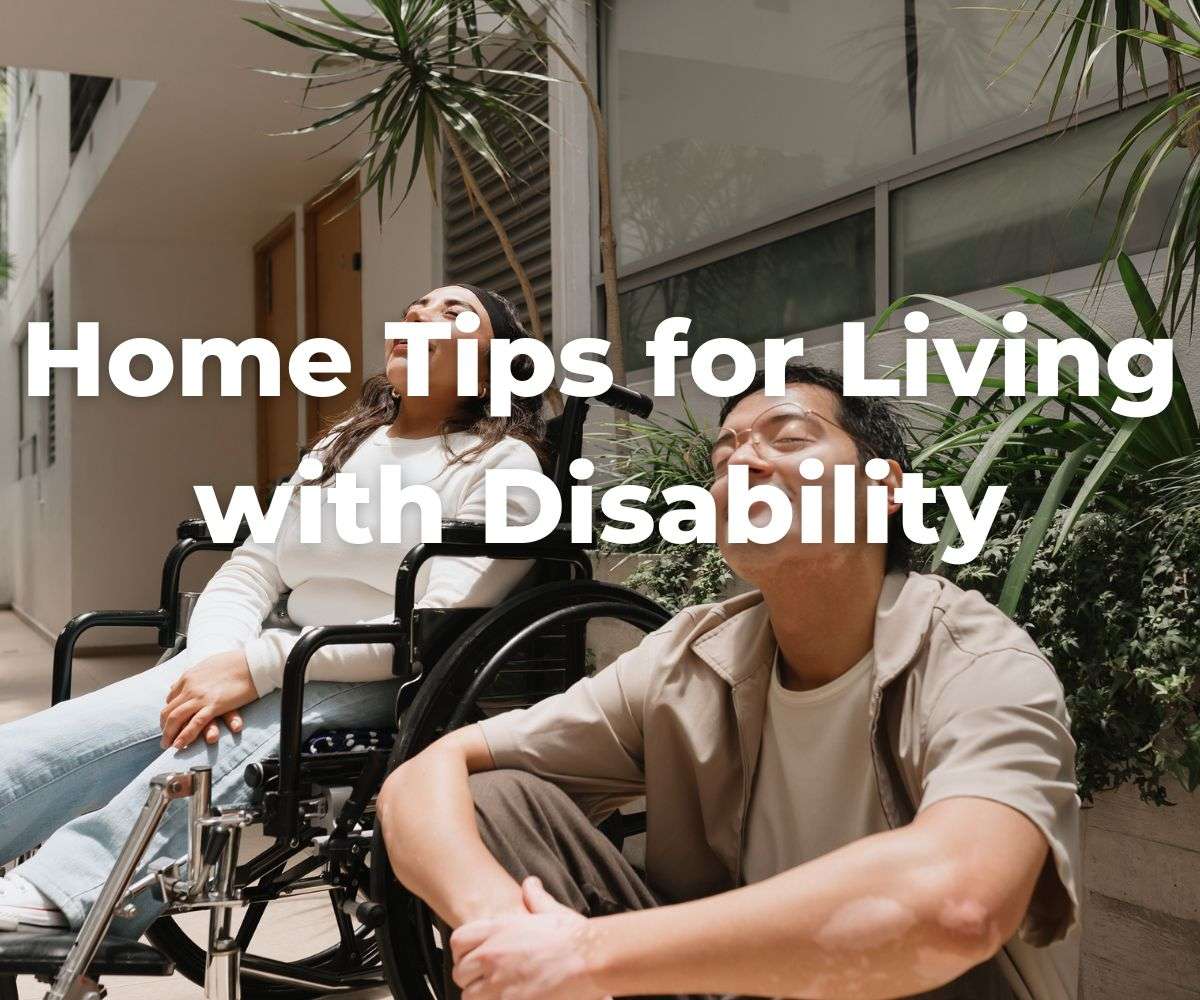home tips for living with disability
Description
Practical Home Tips for Living with a Disability
Creating an accessible home environment isn’t just about meeting physical needs; it’s about fostering independence, safety, and comfort. For over 26% of adults in the United States living with some form of disability, adapting the home can be a game-changer.
Whether you're looking to make your home more accessible for yourself or a loved one, this guide provides key tips to transform your living space into a supportive, welcoming haven.
Modifying Entryways for Easier Access
The entryway is the first point of interaction with your home, and ensuring it’s accessible is crucial. Here's how you can modify entryways to make coming home safe and simple for everyone.
Widen Doorways
Standard doorways may pose a challenge for individuals using wheelchairs or walkers. Consider widening doorframes to at least 36 inches to accommodate mobility devices.
If structural changes aren't feasible, slim-profile hinges, also known as "swing-clear hinges," offer a cost-effective way to create more space without a complete renovation.
Install Ramps and Lifts
Stairs leading to the front door can be a significant obstacle. Installing durable wheelchair ramps with non-slip surfaces can provide easy access. For homes with higher entry points, a vertical platform lift might be a better solution, combining convenience with safety.
Add Accessible Door Handles
Knob-style door handles can be difficult to turn for individuals with limited dexterity. Lever handles are user-friendly and require less effort to operate. Don’t forget to ensure that door locks are also simple to use, perhaps with keyless entry systems for an added layer of accessibility.
Creating an Accessible Kitchen
The kitchen is often the heart of the home, making it all the more vital to design an inclusive space for meal preparation and everyday living.
Lower Countertops and Cabinets
Standard kitchen layouts can be a challenge for wheelchair users. Lowering countertops and cabinets to a reachable height ensures that everyone can access kitchen essentials independently. Adjustable-height counters are another great option for multi-user households.
Install Pull-Down Shelving
Replacing upper cabinets with pull-down shelving systems can make high-up storage solutions practical for individuals of all abilities. Pull-down racks add convenience and safety by eliminating the need for step stools or reaching.
Prioritize User-Friendly Appliances
Choose appliances designed for accessibility, like ovens with side-opening doors, refrigerators with French doors, or induction cooktops with safety features. Make sure appliance controls are large, easy to read, and located on the front for easy access.
Bathroom Adaptations for Safety and Independence
Bathrooms present a unique set of challenges, but with the right modifications, they can be safe, functional, and empowering.
Incorporate Grab Bars
Installing grab bars is a simple yet highly effective way to enhance bathroom safety. Place them near the toilet, shower, and bathtub to provide sturdy support for transfers and movements. Opt for designs with textures or non-slip coatings for maximum effectiveness.
Install Walk-In Showers or Tubs
Traditional bathtubs and showers can be difficult to enter and exit safely. Walk-in showers with zero-threshold designs are ideal for wheelchair users and reduce tripping hazards. Similarly, walk-in tubs with built-in seats and watertight doors offer a safe and relaxing bathing option.
Add Raised Toilet Seats
A raised toilet seat can make sitting and standing much easier for individuals with limited mobility. You can find models with adjustable heights, armrests, and other supportive features.
Smart Home Technology for Enhanced Living
Technology has made leaps and bounds in making homes more adaptable for people with disabilities. Smart home devices offer unparalleled convenience, safety, and independence.
Voice-Activated Systems
Smart assistants like Amazon Alexa or Google Home can control everything from lighting and thermostats to TVs and security systems using only voice commands. This hands-free control is especially beneficial for individuals with physical limitations.
Smart Doorbells and Cameras
Smart doorbells enable individuals to see who’s at the door via a smartphone app, even if they can't physically get to the entryway. Pair them with smart locks for enhanced security and convenience.
Automated Lighting
Motion-sensor lights can brighten rooms or hallways as someone enters, reducing the risk of tripping or fumbling for a switch. Smart lighting systems can also be controlled remotely or programmed for customization.
Home Elevators
For multi-story homes, staircases can pose significant challenges for mobility. Home elevators are an elegant and practical solution to ensure access to every level.
Types of Home Elevators
- Hydraulic Elevators: These powerful lifts are ideal for homes with higher weight capacity needs.
- Pneumatic Vacuum Elevators: Compact and energy-efficient, these lifts don’t require a machine room or pit, making them perfect for smaller spaces.
- Chair Lifts: While not a full elevator, stair lifts are a more affordable alternative for individuals who can remain seated while ascending stairs.
Considerations for Installation
When installing a home elevator, assess your space and specific mobility requirements. Seek advice from experts and ensure your choice complies with local building codes. Experts can offer affordable home elevator options, such as those in Las Vegas, Nevada, to suit your needs while taking into account installation and maintenance costs.
Conclusion
Making your home accessible is an investment in safety, comfort, and quality of life. Whether you begin with a small modification like adding grab bars or take on bigger projects like installing a home elevator, every change matters. Accessibility isn’t just about improving physical spaces; it’s about fostering an environment where everyone can thrive. Consider reaching out to accessibility consultants or local organizations for further resources.





















